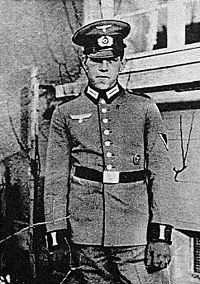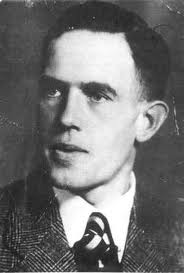 |
 |
The ‘Disappearance’ of
SS-Hauptscharführer
Lorenz Hackenholt
A Report on the 1959-63 West German Police Search for
Lorenz Hackenholt,
the Gas Chamber Expert of the Aktion
Reinhard Extermination Camps ©
Michael Tregenza
INTRODUCTION BY THE HOLOCAUST HISTORY PROJECT
At the end of World War II, one of the most difficult tasks facing the victorious Allies was finding, and bringing to justice, thousands of war criminals, including those responsible for the Holocaust. Discovering the main criminals was relatively easier, since they had occupied positions of power and were, mostly, easy to find. Nonetheless, many - the most notable being Adolf Eichmann - escaped justice for years. The reasons they were able to do this are varied and controversial, but suffice it to say that among them were complicity by government and other agencies, shelter provided by family, friends and ex-colleagues and the sheer enormity of the task at hand.
Others, such as Josef Mengele, were only found after their death. Still others, such as Heinrich Müller, and Alois Brunner have never been found at all or have not been able to be captured.
At the same time, thousands of less well-known, but no less criminal players in the tragedy were able easily to hide. Since they were not known very well, they were able to melt into German or Austrian society with relative ease, emigrate to other countries, especially in South America, or merely vanish. In many cases, it was not known they had been involved in the Holocaust for many years after the end of the war, and for this reason, they had an often lengthy "head start" on their pursuers.
One such individual was Lorenz Hackenholt, an almost unknown SS-Hauptscharführer [Sgt-Major], who served at three of Aktion Reinhard death camps (Belzec, Treblinka and Sobibor) and was responsible for designing and running the gas chambers at those camps. Including his previous work at the euthanasia camps, he was complicit in the deaths of at least 1.5 million Jews.
![]()
![]()
When the then West German government began to hold trials of the death camp participants in the late 1950s and early 1960s, they sought to track down as many of the former camp staff as they could find. One person eagerly sought was Lorenz Hackenholt.
![]()
![]()
In the article that follows, Michael Tregenza shows how daunting a task it could be and demonstrates some of the roadblocks that enabled people such as Hackenholt to escape discovery.
_______________
| Back | Introduction | Forward | | |

